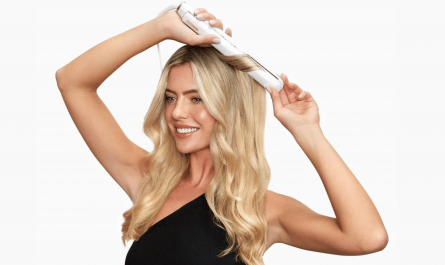Introduction
Sunscreen spray offers a quick, easy way to protect your skin from UV damage. But not all sunscreen sprays are created equal. There are a variety of factors to consider when choosing a sunscreen spray to ensure you get adequate protection. In this article, we’ll cover the key differences between sunscreen spray formulas, proper application techniques, and the pros and cons of using spray sunscreen. With the right information, you can determine the best sunscreen spray for your individual needs.
Factors to Consider When Choosing a Sunscreen Spray
Sunscreen sprays come in different formulations optimized for certain conditions and skin types. Here are some factors to keep in mind:
Sun Protection Strength
Make sure to choose a broad spectrum sunscreen with an SPF 30 or higher to get sufficient UVB and UVA protection. Beach sunscreen sprays typically offer extra-strong SPF 50 or 70.
Active Ingredients
Chemical sunscreens use ingredients like avobenzone and oxybenzone to absorb UV rays while mineral sunscreens use zinc oxide and titanium dioxide to physically block rays. See next section for more on active ingredients.
Skin Type
If you have very sensitive skin, mineral sunscreens are less likely to cause irritation or allergies. Oily skin may benefit from an oil-free sunscreen spray.
Environment/Activity
Water resistant sunscreen sprays are essential for water sports or swimming. Look for sweat resistant formulas for outdoor activities and sports.
Types of Sunscreen Spray
There are two main categories of sunscreen spray formulas:
Chemical Sunscreens
Chemical sunscreen sprays contain active ingredients like:
- Avobenzone – Absorbs UVA rays but can be unstable alone. Often combined with octinoxate or oxybenzone.
- Oxybenzone – Absorbs UVB and short UVA rays. Some concerns over hormonal effects.
- Octinoxate – Absorbs UVB rays. Can be irritating for sensitive skin.
Mineral Sunscreens
Mineral sunscreen sprays use active mineral ingredients:
- Zinc Oxide – Physical blocker of UVA/UVB rays. Very stable and low irritation. Can leave a white cast.
- Titanium Dioxide – Physical blocker of UVB and short UVA rays. Also very stable with minimal irritation.
Combination Formulas
Many sunscreen sprays combine mineral and chemical actives to provide broad spectrum protection with cosmetic elegance.
Proper Application of Sunscreen Sprays
To get the full sun protection promised on the label, follow these tips:
Technique
Hold can 6-8 inches from skin and spray evenly until visible wetness, then rub in thoroughly. Don’t just spray lightly.
Amount to Use
Apply 2 mg/cm2 of skin, which equates to a full shot glass worth for the whole body. Apply half that amount for just face and exposed areas.
Reapplication
Reapply after swimming, sweating heavily, or every 2 hours of sun exposure.
Benefits of Sunscreen Sprays
When used properly, spray sunscreens offer benefits including:
Convenience
Easy to apply on the go or to squirming kids. Requires less rubbing compared to lotions.
Fast Absorption
Light spray formulas absorb almost instantly without feeling greasy.
Easy to Reach Areas
Spray makes sunscreen application simpler for hard to reach spots like the back.
Drawbacks of Spray Sunscreens
Potential downsides to consider include:
Inhalation Concerns
Take care to avoid accidentally inhaling spray formulas, especially around children. Mineral sprays are less risky.
Difficulty Getting Proper Coverage
It can be tricky getting a thick enough layer when spraying. Rubbing in is essential.
Conclusion
Choosing the right sunscreen spray means finding a formula that provides adequate SPF protection along with the right active ingredients for your skin type and intended activities. Always apply enough product and reapply as needed. When used with proper technique, spray sunscreens provide a fast, convenient sun protection option. But take the time to determine which spray meets your specific needs.




